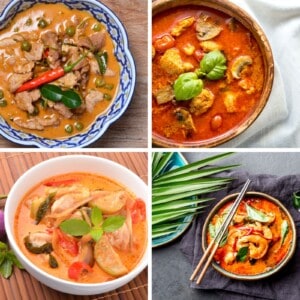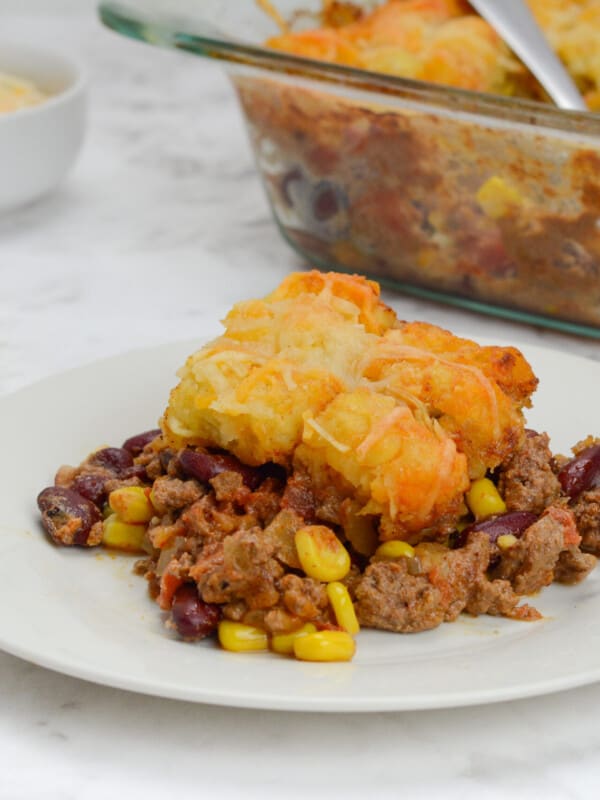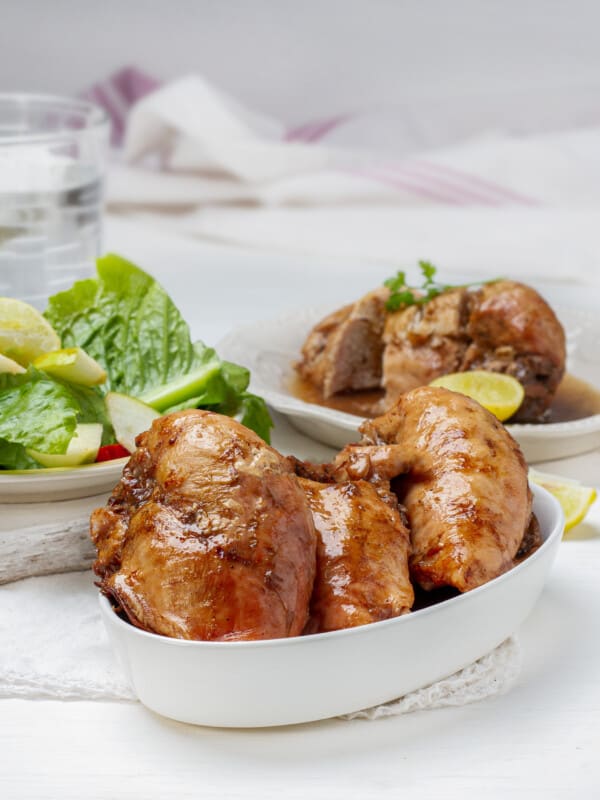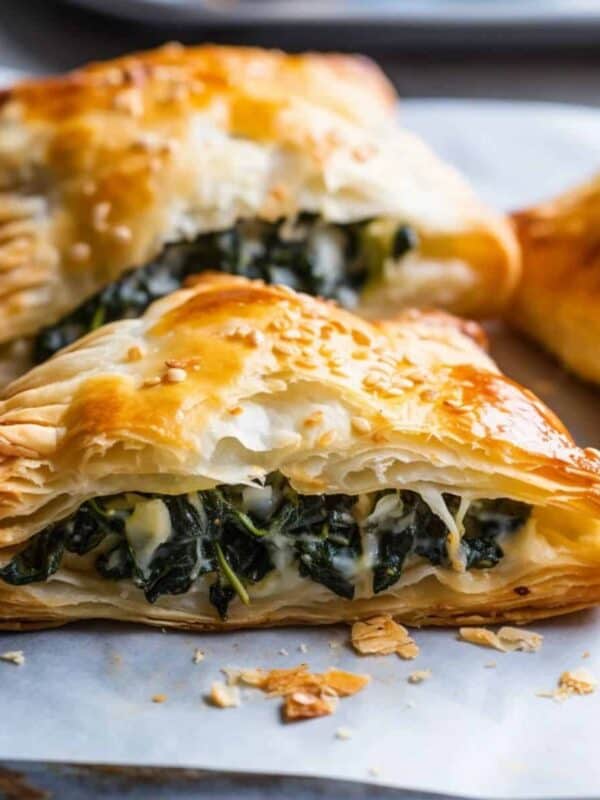Welcome to another aromatic journey, this time we’re taking a voyage through the world of popular Thai curries. Thailand’s cuisine is renowned for its complex flavors and artful blending and balance of different tastes. Among the dishes that best embody these characteristics are the rich and delectable panang and red curries.
We’re going to do a deep dive into these two iconic Thai curries, exploring not only their origins, but what goes into them, and what different variations you may be able to find, or even create. From uncovering the secrets to making your own panang curry or red curry at home, to discovering what sets them apart from one another, come along as we set out on this spice-infused culinary curry campaign. In the end, you’ll know the difference between both types of Thai curries, but you’ll also know which one you’re likely to enjoy more. Let’s get started.
What Is Panang Curry
Panang curry, sometimes also known as phanaeng or penang, is one of the many gems in the glittering array of Thai cuisine. It’s named after the island of Penang in Malaysia, panang curry demonstrates the cultural exchanges that have happened throughout the history of these neighboring countries.
This delicious curry is known for its thick, creamy consistency, which is achieved through the generous use of coconut milk, which also gives the dish a sweet undertone. The curry paste used in panang curry is a fragrant blend of lemongrass, galangal, kaffir lime leaves, and dried red chilies. The results in a mildly sweet, but also slightly salty flavor. One of the distinguishing features of a panang curry is the addition of crushed or ground peanuts, or peanut butter, which adds a deep, nutty taste.
Panang curry protein is usually beef, traditionally, but some variations can be found that integrate other proteins. Panang curries are typically served with jasmine rice on the side, which helps provide balance for the richness of the curry.
Different Types of Panang Curry
It’s important to remember that while the core components of panang curry remain relatively constant, various adaptations cater to different tastes and dietary needs. The traditional addition of beef can be easily replaced with chicken, pork, tofu, and even duck or shrimp.
Some versions also use less coconut milk, making a lighter consistency more akin to a curry soup, while others may cross the no-vegetables line usually drawn in the sand by panang curry, adding things like bell peppers or onions for extra crunch. There are even vegetarian and vegan options possible with the right adaptations. No matter what changes you make, as long as the basic components remain in place, you’ll keep the fundamental flavors.
How Do You Make Panang Curry
Making panang curry at home can be incredibly delicious as well as a rewarding culinary experience. The process itself will begin with the curry paste. While you can buy pre-made curry paste, homemade curry paste will allow you to experience a fresher and more vibrant flavor, as well as allow you to completely customize your taste preferences and heat levels.
Blend lemongrass, galangal, kaffir lime leaves, dried red chilies, coriander seeds, cumin, garlic, and shallots to complete the paste. Next, heat some coconut milk in a pan until it starts to separate, then add the curry paste and fry until deeply fragrant. Pour in more coconut milk, the fish sauce, and palm sugar, for the ultimate sweet-salty blend. Add the protein of choice and simmer until cooked, then stir in the peanuts or peanut butter, and garnish with kaffir leaves and chili strips.
Delicious Panang Curry Ingredients
The allure of panang curry lies in the blend of ingredients that make it a delicious and fragrant curry dish, without being so spicy as to become inaccessible to those thinking of trying it. The aromatic mixture of lemongrass, galangal, kaffir lime leaves, and dried chilies create the curry paste base, while the coconut milk gives the dish the creamy and luxurious texture it’s known for. The peanuts or peanut butter are essential for adding the needed depth to the dish.
Great Panang Curry Recipes You Should Try
- Classic Beef Panang Curry: The traditional rendition featuring tender pieces of beef.
- Chicken Panang Curry: A poultry alternative that’s just as satisfying.
- Vegan Panang Curry: A plant-based take on this classic, replacing animal protein with tofu and using vegan curry paste.
What Is Red Curry
Venturing deeper into the tapestry of Thai cuisine, we arrive at red curry, another vibrant dish that has been a staple of Thai cooking for generations. Known as “kaeng phet” in Thai, which means “spicy curry”, red curry is noted for the potent, fiery character its color suggests, though it also has a delightful balance of aromatic flavors.
Central to red curry is the curry paste, which is made from a blend of dried red chilies, galangal, lemongrass, garlic, shallots, and spices. This blend gives red curry a distinct heat and depth of flavor. Coconut milk is added to the curry, taming the chili’s heat while lending a rich, creamy texture to the dish.
When it comes to protein in red curry, there is a wide variety of options. Common choices include chicken, beef, shrimp, and tofu. Bamboo shoots and Thai eggplants are typically seen as well, giving the dish additional layers of texture. A garnish of Thai basil leaves brings a fresh, anise-like flavor to the final dish. Red curry is generally served with jasmine rice or Thai rice noodles and delivers a warmly satisfying and filling meal.
Different Types of Red Curry
Despite the classic red curry recipe being a Thai classic, it still lends itself to a range of adaptations and variations. While chicken is common, you may find versions with beef, shrimp, and tofu. Duck red curry is a richer version.
Vegetarian or vegan red curry is simple to accomplish by simply changing out the protein option for something vegetarian or vegan-friendly, like tofu or seitan. Vegans should also make sure to use a vegan-friendly curry paste, since some may include animal-based ingredients.
Other versions may add different vegetables or may adjust the heat level to suit a personal or family preference. Regardless of the variation, red curry has a fiery core and a very aromatic depth.
How Do You Make Red Curry
Creating an authentic Thai red curry at home starts with making the core ingredient, the curry paste. For a red curry, the curry paste is made from red chilies, garlic, lemongrass, shallots, coriander roots, and kaffir lime peel. If that sounds like a lot, you’re not alone, many people choose to simply purchase a red curry paste premade.
Star by sauteing the curry paste in hot oil until fragrant, then adding coconut milk and bringing it to a simmer. Add your protein, and cook until tender. Incorporate vegetables like bell peppers, bamboo shoots, and eggplant, then enhance the flavors with fish sauce, palm sugar, and kaffir lime leaves. Finish with Thai basil leaves and red chili slices for additional heat. Serve with steamed jasmine rice.
Delicious Red Curry Ingredients
The key ingredients for a red curry include the red curry paste, coconut milk, and your protein of choice. Vegetables add texture and freshness to the curry, as well as a delicious crunch. Kaffir lime leaves, Thai basil, and red chili slices finish the dish with depth and a flourish of additional color.
Great Red Curry Recipes You Should Try
- Classic Chicken Red Curry: A popular option showcasing tender chicken.
- Vegetable Red Curry: A vibrant, vegan-friendly feast packed with colorful vegetables.
- Tofu Red Curry: This vegetarian alternative offers a protein-packed twist.

Wrapping Up: What are the key differences between Panang Curry vs. Red Curry?
While both panang curry and red curry share similar roots in Thai cuisine and both use a coconut milk base, each one has unique characteristics. Panang curry is typically milder, sweeter, and richer, due to the addition of peanuts and the lower amount of chili used in the curry paste. Red curry, on the other hand, is often spicier and more aromatic, courtesy of a larger quantity of red chilies used to create the curry paste. While both curries have the potential to work with many different proteins, panang curry will often exclude vegetables, whereas red curry will often have bamboo shoots or Thai eggplant.
Frequently Asked Questions (FAQs)
Q1: Are Panang Curry and Red Curry gluten-free?
Typically, both curries have the potential to be gluten-free, as long as the curry paste and other ingredients used do not contain gluten. Be sure to check the label on any store-bought ingredients to ensure there are no glutenous additives or ingredients.
Q2: Can the heat in Red Curry be adjusted?
Yes, in most recipes the heat can be adjusted simply by moderating the number of red chilies that are used to create the curry paste. Fewer red chilies will mean a milder curry paste, while more chilies will turn up the heat.
Q3: What can I serve with these curries?
Both of these curries are relatively versatile and can be served either with jasmine rice or Thai rice noodles. You could also serve them with a side of Thai cucumber salad for a contrasting and refreshing crunch.
Panang Curry vs Red Curry

Instructions
- Choose your favorite recipe.
- Click the link to view the instructions
- Follow the linked instructions
- Enjoy!





